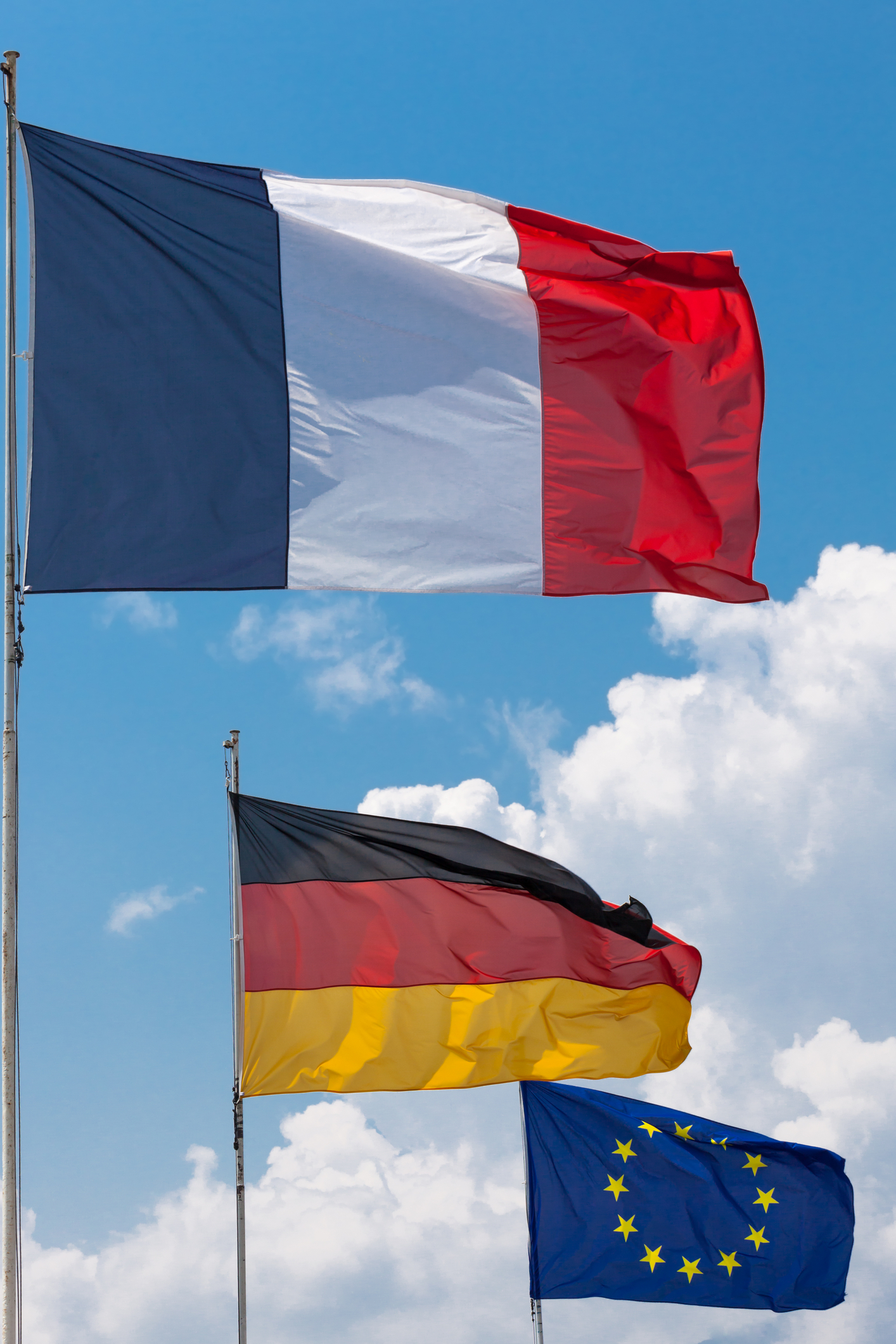By Pierre Tran
Paris – The French and German defense ministers signed April 26 a memorandum of understanding, with a target of signing contracts by the end of the year to launch phase 1A of designing and building a new tank, dubbed main ground combat system (MGCS).
The French armed forces minister, Sébastien Lecornu, and his German counterpart, Boris Pistorius, gave a news conference on the planned weapon system, which will include manned and unmanned vehicles armed with conventional and laser weapons, and working in a combat cloud network of advanced communications.
Phase 1A will set out the architecture of the project and decide the companies’ leadership, including how the eight industrial pillars will be shared, an official of the French armed forces ministry said after the news conference.
The two defense ministers were speaking just a day after the French president, Emmanuel Macron, gave a keynote speech, calling on the European Union to pursue European military capability, backed by heavy financial and political investment in the arms industry.
“We must produce more, we must produce faster, and we must produce as Europeans,” he said at the élite Sorbonne university.
The head of state also called for reform of European central bank policy to support spending to tackle climate change, and investment in new technology, including artificial intelligence. There was no guarantee Europe would live on.
“We have to be lucid that our Europe today is mortal — it can die — and it depends on the choices that we make now,” he said.
The German chancellor, Olaf Scholz, promptly welcomed Macron’s speech.
“France and Germany want Europe to be strong,” the leader of the German coalition said on social media. “Your speech contains good ideas on how we can achieve this.”
That warm response from Scholz was reported as a break from a previous chill in relations between the two political leaders. Strained ties at the highest level were seen as hampering cooperation on major arms projects, namely the future combat air system (FCAS), and the MGCS, due to replace the German Leopard 2 and French Leclerc in 2040.
The Russian invasion of Ukraine in February 2022, and the possible return of Donald Trump to the White House are seen as key factors in Macron’s call for a stronger European military and industrial capability, with the EU working with Nato.
It remains to be seen if the 27 EU member states will take up the measures to boost European sovereignty outlined by Macron, who has led the charge for strategic autonomy.
Fresh Dynamism
The joint press conference with the French and German defense ministers appeared to show restored political ties between Berlin and Paris, key members in the EU.
Pistorius made his opening remarks in fluent French before speaking in German in the elegant room, mostly filled by German journalists.
France and Germany were close, the German minister said, and there was a “new dynamic” between the two nation states.
There would be difficult, complex negotiations in drafting contracts on the MGCS – the negotiating teams have a great deal to do – but the deal would be sealed by the end of the year, he said. Asked if the Bundestag would endorse the agreement, he was confident the German parliament would back the deal.
French and German parliamentarians sat on the front row, which had been reserved for them by French officials.
Lecornu pointed up how work on the MGCS showed a European lead over the U.S. and Russia, as neither had started work on replacing the Abram and Russian army tanks.
There had been a difference of approach on the MGCS compared to the FCAS, he said, with the priority given to French and German army officers agreeing on common military requirements on the former. That was in contrast to the time consumed by French and German industry in competing claims to win project leadership on the latter.
Germany will be the lead nation on MGCS, and German authorities will sign contracts with the companies working on the project.
Work on MGCS will be shared 50/50 between the partner nations, and Italy has signed up as observer nation. There is interest from other countries, including those in Eastern Europe, on work on the new tank, the ministry official said.
There has been French concern on whether there would be equal share of work, as Rheinmetall, a German builder of weapons and shells, had won a place on the work plan. That might have reduced the French share of work.
Work had previously been reserved for the French and German units of the KNDS joint venture, until Rheinmetall lobbied successfully for its share.
Rheinmetall, Thales, and other companies will work on MGCS, Lecornu said, with the French electronics company due to work on the connectivity.
The MGCS contracts relate to studies on eight industrial pillars:
- platform: German leadership. This will include the chassis and navigation system;
- conventional firepower: Franco-German shared leadership. This includes the cannon, turret, and ammunition, with national development of systems, trials, and a selection after test firing;
- innovative firepower: French leadership on secondary weapons, including guided missiles;
- combat cloud communications: Franco-German leadership;
- simulation: Franco-German leadership;
- sensors: French leadership;
- active protection: German leadership, includes anti-drone measures
- infrastructure: Franco-German leadership, includes logistics, service, and infrastructure.
The work will be shared out on a 50/50 basis. Phase 1A will be followed by phase 1B, which will build a prototype.
The French 2024-2030 military budget law pledges some €500 million to support the MGCS project, the French minister said.
There had been plans for MGCS to enter service in 2035, but that was pushed back to 2040.
The core of the future combat air system is a new fighter jet, to replace respectively the Eurofighter Typhoon for Germany and Dassault Aviation Rafale for France, in 2040.
Featured Photo Credit: Photo 31903726 | German Flags © Joerg Habermeier | Dreamstime.com


